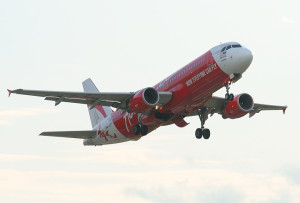Paradigm Shift in Automation
The crash of TransAsia Airways Flight 235 on February 4 was yet another case of human error leading to dozens of lives and millions of dollars lost in the airline industry. As the flight took off from the Taiwanese capital of Taipei, its cockpit was soon thrown into disarray by warnings notifying the pilots that one of the two engines had begun to idle. Standard procedure would have been to turn off the suspect engine, as the ATR 72 model can still remain airborne with only one engine running. However, the pilots instead panicked and shut off the working engine, leading the aircraft to careen into the Keelung River just a minute removed from Songshan Airport. As a result, 40 of the 58 passengers perished; had chief pilot Liao Chien-tsung not redirected its crash course, the airplane would have collided into a densely-populated commercial section of the city.

In the morbid realm of airliner crashes, this story is not at all uncommon. A well-known report by the National Transportation Safety Board in 1994 determined that 31 of 37 major commercial airliner accidents between 1978 and 1990 occurred due to cockpit crews incorrectly interpreting, and improperly reacting to, the airplane’s autopilot mechanisms. This trend has unfortunately persisted throughout more recent history as well, with flights such as Colgan Air 3407 and Air France 447 in 2009, AirAsia QZ8501 in 2014, all crashing due to pilot incompetency.
Despite a terrible year for airline reputations in 2014, aviation experts are still quick to point out that commercial airlines have never been safer. In the past seventy years, the number of global commercial crashes has dropped drastically from its height of 55 in 1972 to 12 in 2014, with the lowest number being 10 in 2012. It is no accident that there has been an inverse correlation between this drop and the exponential increase of aviation automation. The augmented role of the autopilot in the cockpit has allowed for greater precision in flying, leading to more efficient routes and safer maneuvers, especially in poor weather conditions. However, this greater reliance on automation has come at the cost of shortening pilots’ attention spans. A pilot will, on average, directly control the plane for only a few minutes per flight, usually during takeoff and landing. Aside from those brief periods, it has become their job to monitor a system that works 99% of the time and be ready to respond in case of emergency--indeed, the original roles of artificial intelligence and human pilots have become reversed.
The airline industry has proven to be a cautionary tale for the automation of human transportation. Its current model for navigation has relegated the pilot to a passive actor, in charge of monitoring systems in a manner that is, simply put, not natural. Knowing that they are not needed for hours at a time, it becomes nigh on impossible for pilots not to tune out, even just a little bit. This leads to greater room for human error, as autopilot is typically not just a simple setting--over the course of a flight, the airplane’s system switches through a myriad of modes. In the case of emergency, a pilot must be aware of just what the computers were doing prior to that moment. Otherwise, the pilot could potentially be responding with improper protocols. These lapses in judgment provide the evidence necessary for a paradigm shift in the usage of artificial intelligence throughout society.

The automation of public transportation and private automobiles is coming. Google has received much acclaim for its research and development in the realm of autonomous cars, while multiple projects throughout Europe are experimenting with driverless shuttles and buses. Even the train industry is heading in a similar direction, as it suffers from the same problem of passivity as the airline industry. Acknowledging this progression, governments and companies have the opportunity to bring about change in how artificial intelligence pervades our daily lives. The implementation of automation needs to be human-centered. Instead of pilots, drivers, and engineers being the ones who act as safety nets for machines and algorithms, artificial intelligence must be the safety net for humans. This move from a human-passive to a human-active paradigm takes advantage of the expanded capabilities of artificial intelligence in our era, as well as playing to the strengths of the individuals tasked with navigation.
Transportation finds itself in an awkward position of limbo, somewhere between computer-assisted and autonomous. Self-driving cars will not be mainstream in the next decade, nor will self-navigating airplanes, trains, buses. If we are to assume, then, that humans are a necessary element of navigation, it makes sense that the only way to increase safety is to reform present automation. Passive automation has made the airline industry one of the safest ways to travel in the world. Knowing that the remaining accidents were the result of human lapses, the reformation of automation could potentially eliminate nearly all of the danger from the process. Furthermore, active systems of human-centered automation, where the autopilot acts as the safety net, would provide the framework for automation in other transportation industries, thereby easing the adoption curve. Technology should exist to aid us, rather than replace us.
